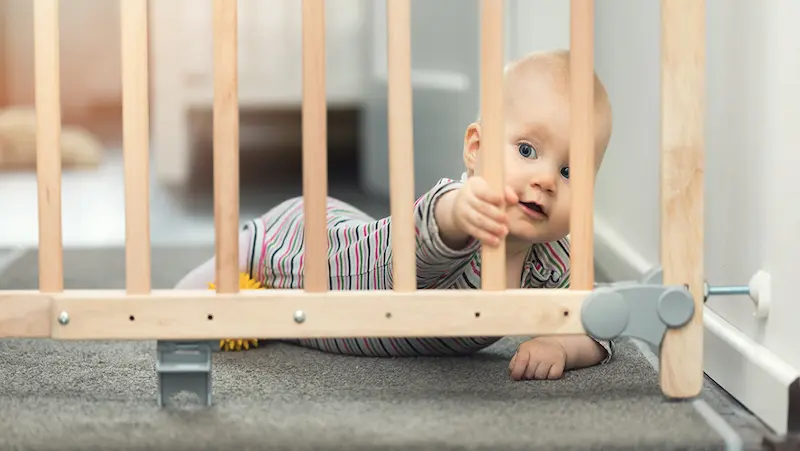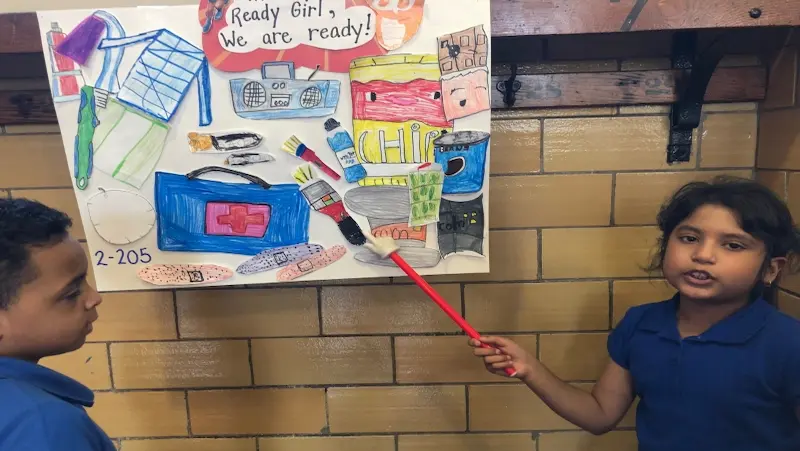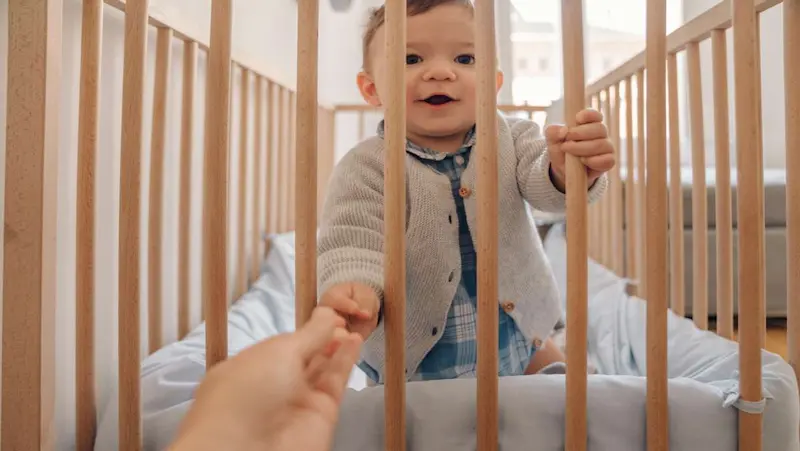Creating a safe environment for children is of paramount importance in ensuring their well-being and development. As they explore the world around them with boundless curiosity and energy, it becomes crucial for parents, caregivers, and society as a whole to childproof their surroundings.
Childproofing refers to the process of taking preventive measures to minimize potential hazards and risks that could cause harm to children. By implementing effective childproofing strategies, we can significantly reduce the occurrence of accidents, injuries, and even fatalities that young children may encounter in their daily lives.
Table of contents
Understanding Child Development and Safety
Welcoming a child into your home is an incredible experience filled with joy and excitement. As parents, guardians, or caretakers, our top priority is ensuring the safety and well-being of our children.

Key Developmental Stages and Milestones
Child development encompasses a wide range of physical, cognitive, social, and emotional changes that occur as children grow. Let’s explore some of the key developmental stages and milestones that significantly impact childproofing strategies:
Infancy (0-12 months): During this stage, babies are rapidly developing their motor skills and exploring the world around them. They begin by rolling over, then progress to crawling, pulling up, and eventually walking. Childproofing measures should focus on securing furniture, covering electrical outlets, and ensuring a safe sleep environment.
Toddlerhood (1-3 years): Toddlers become more mobile, curious, and independent. They start climbing, running, and testing their limits. Childproofing efforts should include installing safety gates on stairs, securing cabinets with childproof locks, and removing small objects that pose a choking hazard.
Preschool (3-5 years): At this stage, children’s curiosity and exploration continue to expand. They have increased mobility and coordination, allowing them to climb higher and navigate more complex environments. Childproofing measures should address potential dangers such as window falls, sharp objects, and accessible cleaning supplies.
School-age (6-12 years): Children in this stage become more capable of understanding safety rules and guidelines. However, they still need a safe environment. Childproofing strategies may involve teaching children about potential hazards, ensuring internet safety, and promoting responsible use of technology.
Safety Hazards at Different Ages:
As children grow and explore the world around them, their safety becomes a paramount concern for parents and caregivers. Each age group presents unique safety hazards, and it is crucial to understand these risks to provide a secure environment for children.

Safety Hazards for Infants:
Infants are completely dependent on their caregivers for safety and protection. Their limited mobility does not prevent potential hazards, and it is essential to anticipate and address the following risks:
1. Suffocation and Choking Hazards: Keep soft bedding, pillows, and stuffed animals out of the crib to reduce the risk of suffocation. Ensure that small objects are out of reach, as infants tend to put things in their mouths.
2. Falls: As infants start rolling over and crawling, they can accidentally roll off beds, changing tables, or other elevated surfaces. Always supervise your baby and use safety gates to restrict access to staircases and hazardous areas.
Safety Hazards for Toddlers:
Toddlers are curious and eager to explore their surroundings. Their newfound mobility increases the potential for accidents. The following safety hazards are common during the toddler years:
1. Poisoning: Toddlers have a tendency to put anything they find into their mouths. Keep cleaning supplies, medications, and poisonous substances securely locked away.
2. Drowning: Never leave a toddler unattended near water, including bathtubs, swimming pools, and even buckets filled with water. Empty and store buckets upside down to prevent accidental drowning.
Safety Hazards for Preschoolers:
Preschoolers are becoming more independent, but their growing curiosity and eagerness to explore can still expose them to various safety hazards:
1. Falls: Preschoolers are more active and may engage in activities that put them at risk of falling, such as climbing furniture or playground equipment. Ensure playgrounds and play areas have appropriate safety measures and always supervise outdoor play.
2. Burns and Scalds: Teach preschoolers about the dangers of hot objects and liquids. Use stove guards to prevent accidental burns, and avoid placing hot items near the edge of tables or countertops.
Childproofing Essentials for the Home
Room-by-Room Childproofing Guide:
Childproofing your house can help prevent accidents and injuries, giving you peace of mind and allowing your little ones to thrive. In this room-by-room childproofing guide, we will provide you with a comprehensive checklist for each area of your home, along with potential hazards and appropriate safety measures.

1. Kitchen:
The kitchen is filled with potential hazards, including sharp objects, hot surfaces, and toxic substances. Here are some key safety measures to implement in this area:
1. Secure cabinets and drawers with childproof locks to keep knives, cleaning products, and other dangerous items out of reach.
2. Install stove knob covers to prevent accidental burns or fires.
3. Keep small appliances, such as toasters and blenders, unplugged and stored away when not in use.
4. Use stove guards to block access to hot surfaces.
2. Living Room:
The living room is a common gathering space for families, and it requires attention to ensure child safety. Consider the following measures:
1. Anchor heavy furniture, such as bookshelves and TV stands, to the wall to prevent tipping.
2. Cover electrical outlets with outlet covers or plug guards.
3. Secure cords from blinds and curtains out of reach.
4. Use corner guards or edge bumpers on sharp furniture edges and fireplace hearths.
3. Bathroom:
The bathroom holds various dangers, including water hazards, medications, and cleaning products. Focus on these precautions:
1. Install a toilet lock to prevent drowning hazards.
2. Keep all medications, vitamins, and cleaning products stored in a locked cabinet out of reach.
3. Set the water heater temperature to 120°F (49°C) or lower to prevent scalding.
4. Place non-slip mats or decals in the bathtub or shower to prevent slips and falls.
Safety Equipment and Products:
One crucial aspect of child safety is implementing effective childproofing measures in our homes. By investing in the right safety equipment and products, we can create a secure environment for our little ones to explore and grow.

Safety Gates:
Safety gates are indispensable for preventing access to potentially hazardous areas such as staircases, kitchens, or rooms containing fragile items. Look for gates that are sturdy, easy to install, and feature a secure locking mechanism. Some recommended brands include:
1. Evenflo: Evenflo offers a wide range of safety gates known for their durability and user-friendly features. Their gates are designed with child safety in mind and are often praised for their reliability.
2. Regalo: Regalo is another trusted brand that specializes in safety gates. Their gates are adjustable, ensuring a snug fit in various doorways, and are often commended for their ease of installation.
Cabinet Locks:
Cabinet locks are essential for keeping curious little hands away from potentially dangerous substances, sharp objects, or choking hazards. Look for locks that are easy to install, yet robust enough to withstand a child’s attempts to open them. Some reliable options include:
1. Safety 1st: Safety 1st offers a range of cabinet locks designed to secure cabinets and drawers effectively. They are known for their straightforward installation process and child-resistant mechanisms.
2. Dreambaby: Dreambaby is a reputable brand that offers a variety of cabinet locks suitable for different types of cabinets and drawers. Their locks often receive positive discipline feedback for their effectiveness and durability.
Digital Childproofing
Introduction to Digital Childproofing:
Digital childproofing, or safeguarding children in the digital age, has become an essential aspect of gentle parenting and education. This blog will delve into the challenges of digital safety and highlight the importance of protecting children in an increasingly interconnected world.

The Challenges of Digital Safety
As children are exposed to the internet and digital devices at younger ages, ensuring their online safety has become a paramount concern. The challenges of digital safety are multi-faceted and require careful attention from parents, educators, and society as a whole. Some of these challenges include:
1. Age-inappropriate content: The internet provides access to a vast range of content, both appropriate and inappropriate for children. From violence and explicit material to cyberbullying and harmful ideologies, children can inadvertently stumble upon content that may negatively impact their development.
2. Cyberbullying: The digital realm can be a breeding ground for cyberbullying, wherein children may be subjected to harassment, humiliation, or threats from their peers. The anonymity of online platforms can embolden bullies and make it difficult for victims to escape the torment.
Managing Screen Time:

Setting Healthy Screen Time Limits:
1. Establish Clear Guidelines: Set specific rules regarding screen time usage for your children. Define the duration and purpose of each device usage, such as homework, recreational activities, and socializing. Communicate these guidelines clearly and consistently to avoid confusion.
2. Lead by Example: Children are more likely to follow rules when they see their parents actively practicing them. Be mindful of your own screen time habits and demonstrate a healthy balance by engaging in offline activities. Encourage quality family time that does not revolve around screens.
Parental Control Apps and Tools:
1. Content Filtering Software: Install parental control apps or software that filter and block inappropriate content based on age-appropriate settings. These tools help create a safer online environment for children by restricting access to explicit material and limiting exposure to potentially harmful content.
2. App and Website Monitoring: Utilize apps that allow you to monitor and track the apps and websites your child visits. These tools provide insights into their online behavior, enabling you to have informed discussions about responsible internet usage.
Conclusion:
In conclusion, staying vigilant and continuously adapting childproofing strategies is of paramount importance as children grow and develop. The safety and well-being of our children should always remain a top priority, and this includes creating a secure environment for them to explore and thrive in.
In conclusion, the journey of childproofing does not end once we have implemented initial safety measures. Instead, it is an ongoing process that requires vigilance, adaptability, and proactive measures to ensure the well-being of our growing children. By prioritizing their safety and continuously adapting our childproofing strategies, we can provide them with the secure and nurturing environment they need to flourish.
Check out Brightchamps blog page for more such informative and free content! Also, don’t forget to check out this blog for essential tips on money management for kids, fostering a lifetime of financial success from a young age!
Frequently Asked Questions
A1. Childproofing is crucial to prevent accidents and injuries, ensuring the safety of your child within your home.
A2. Start childproofing your home before your child becomes mobile, typically around 6-8 months, to minimize potential hazards.
A3. Focus on childproofing areas such as the kitchen, bathroom, stairs, windows, electrical outlets, and cabinets where hazardous items are stored.
A4. Cover electrical outlets with safety plugs or outlet covers, secure cords out of reach, and avoid using extension cords in accessible areas.
A5. Install safety gates at the top and bottom of stairs, secure windows with window guards or locks, and use corner protectors on sharp furniture edges.
A6. Anchor heavy furniture and appliances to the wall using furniture straps or brackets to prevent tipping and potential accidents.
A7. Store hazardous items out of reach, use stove knob covers, install cabinet locks, and keep hot liquids away from the edge of counters or tables.
Q8. Ensure products are age-appropriate, durable, easy to install, and compliant with safety standards to effectively safeguard your child.
A9. Choose childproofing products that blend with your home decor, such as clear outlet covers or cabinet locks that are discreetly hidden.
A10. Supervise your child closely, teach them about safety rules, create a designated play area, install smoke detectors and carbon monoxide alarms, and secure heavy outdoor items like swing sets.















